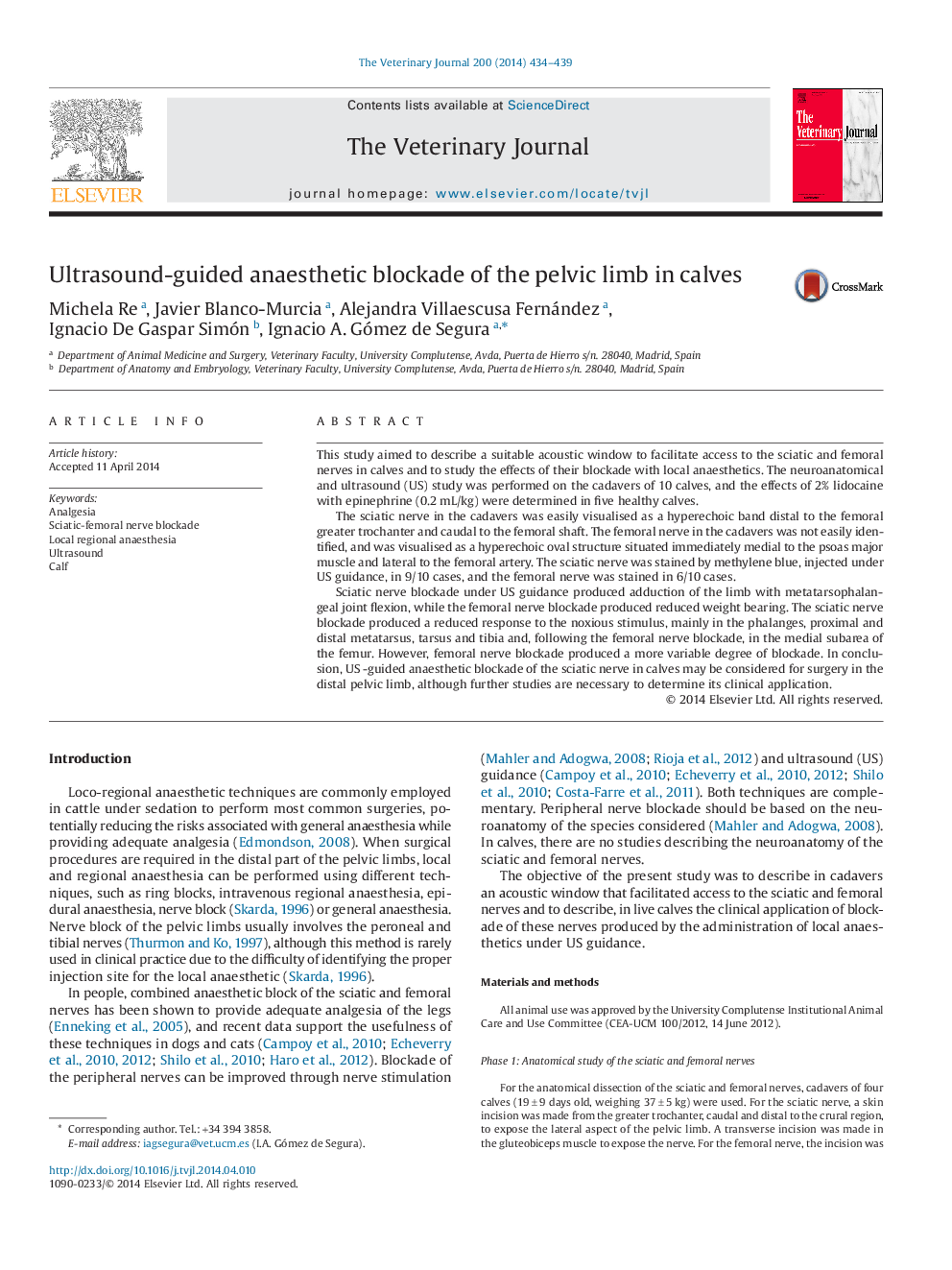| Article ID | Journal | Published Year | Pages | File Type |
|---|---|---|---|---|
| 2463950 | The Veterinary Journal | 2014 | 6 Pages |
This study aimed to describe a suitable acoustic window to facilitate access to the sciatic and femoral nerves in calves and to study the effects of their blockade with local anaesthetics. The neuroanatomical and ultrasound (US) study was performed on the cadavers of 10 calves, and the effects of 2% lidocaine with epinephrine (0.2 mL/kg) were determined in five healthy calves.The sciatic nerve in the cadavers was easily visualised as a hyperechoic band distal to the femoral greater trochanter and caudal to the femoral shaft. The femoral nerve in the cadavers was not easily identified, and was visualised as a hyperechoic oval structure situated immediately medial to the psoas major muscle and lateral to the femoral artery. The sciatic nerve was stained by methylene blue, injected under US guidance, in 9/10 cases, and the femoral nerve was stained in 6/10 cases.Sciatic nerve blockade under US guidance produced adduction of the limb with metatarsophalangeal joint flexion, while the femoral nerve blockade produced reduced weight bearing. The sciatic nerve blockade produced a reduced response to the noxious stimulus, mainly in the phalanges, proximal and distal metatarsus, tarsus and tibia and, following the femoral nerve blockade, in the medial subarea of the femur. However, femoral nerve blockade produced a more variable degree of blockade. In conclusion, US -guided anaesthetic blockade of the sciatic nerve in calves may be considered for surgery in the distal pelvic limb, although further studies are necessary to determine its clinical application.
